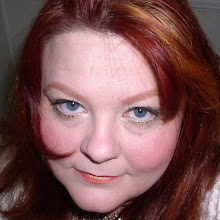First Things First
The first thing to know when learning about eye shadow application is that you should use brushes to apply the makeup, as opposed to eye shadow applicators. Brushes are a good idea because they help you achieve a specific look when applying the eye shadow – it’s best to steer clear of foam applicators. So when you buy your eye shadows, if the applicator that comes with it is foam, the best thing to do is just toss it and use a brush.
For hygiene reasons, it is also not a good idea to share your eye makeup tools with others. Sharing tools can spread eye infections, even if you didn’t know you had one.
A final safety tip before we move on to eye makeup application: if you ever get eye shadow in your eye, you should gently flush it with lukewarm water.
Eyebrow Shape
One of the best things you can do when it comes to applying eye makeup is to shape your eyebrows. It will make a difference in how the eye shadow looks when you put it on your eyes. This doesn’t mean you have to pluck them, but lightly brushing the brows into shape will help your eye shadow to stand out.
In mentioning the eyebrows, it is important to note that you should never cover your brow bone with deep color – unless you have the guidance of a professional makeup artist for a special occasion. The last thing you want is an overly dramatic look with too much eye shadow. Apply the eye shadow up to the brow bone, but don’t apply shadow on the bone unless it’s a neutral color or a highlighter.
Applying the Color
Color placement is another important detail when it comes to applying eye makeup. Light colored shadows are best for covering the entire eyelid; from lash line to the brow. For the lower eyelid, it’s best to go with a medium shade. The darkest shades should go on the outer corner of the eyes, from the lash line to the crease. For night time wear, you can intensify the darker shades for a more dramatic look.
When deciding which colors to use, it’s best to opt for the lighter pastel colors for daytime and the darker, more adventurous colors for night. It’s not the best idea to wear darker colors during the day, because they won’t look natural and they’ll drown out your overall look.
Blue eye shadow is no longer taboo. Matching the color of your eye with a shadow actually brings out the color. Play up your blue eyes with a shade of blue shadow. But blue shadow isn’t only for light-eyed beauties. Use your eye’s complimentary color to accentuate your hue and draw attention to your eyes. For instance, the complimentary color for blue eyes is orange, and brown eyes contrast with a blue eye shadow. The difference in color can make a subtle but noticeable impact.
When you want to apply light shades such as blue, beige, light green and light gray, first draw a thin line with the help of liquid eyeliner or eye shadow pencil. Draw the line over the upper lash line, because usually the light shades make your eyes look smaller in size.
Techniques and More
When applying eyeshadow, blending is the most effective technique to try. To blend your eye shadow, use three different colors: the highligter, which is usually a very light neutral color like taupe, a darker color for the crease and a main color for the lid. Once you’ve picked out your colors, you’ll want them to blend together well. To do this, you’ll need to apply the light highlight color first, and then progressively add the darker shades. This means first applying the highlighter, then the lid color and then the crease color. Make sure to apply the shadows gently – it’s easier to add more makeup than to remove it.
There are many tips you can use to effectively apply eye makeup. Other eyeshadow makeup application tips include:
Set your eye shadow with a great primer base. Primers set eye shadow makeup and help it stay for hours. I like a cream primer base like the one from Scandalous Cosmetics, Lumiere or even a shade stick like NYX's Milk works great.
Use eye pencils to help bring out the colors of the shadows you use. Eye pencils are great for adding some drama to your eyes at night, and they can help make small eyes appear larger.
When applying your eye shadow, make sure you keep the other makeup colors on your face in mind. It is a good idea to coordinate these colors so they work well together.
Remember that practice makes perfect. The more you practice, the better you will get at applying eye shadow.
Eye shadow’s chief purpose is to enhance the eye’s shape. Keep in mind that there are two main reasons for applying eye shadow: to add simple definition to your eye or to make a strong impact. This depends on your choice of color.
The trick to applying eye shadow knowing “when to say when.” It’s difficult, when applying neutral shades, to gauge how much shadow you need to apply. Additionally, it will look much brighter in outdoor light versus how it appears on your eye when using indoor lighting or a makeup mirror. Keep in mind that when it comes to applying eye shadow, less is more. Even when using bold colors or dark shades it is better to give the hint of color rather than to look like you’re ready for Halloween.








No comments:
Post a Comment